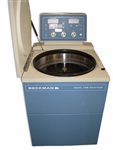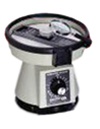Description
Patient demographics, measurement data and trends, acquired and stored in the MMS, can be transferred to the M-Series (M3/M4)3 and Philips IntelliVue (MP60/MP70/MP90) patient monitors.
EASI™-derived 12-lead ECG4 using a 5-electrode cable set.
Multi-lead Arrhythmia.
Up to 3 channels of ECG with basic Arrhythmia and ST Analysis capability.
FAST-SpO2 measurement, using Fourier Artifact Suppression Technology, for accurate performance even with low perfusion.
Respiration, Non-invasive and Invasive Blood Pressure, and Temperature measurements.
Mainstream or Sidestream CO2, a second Invasive Blood Pressure and Temperature measurements, and enhanced Arrhythmia capability, available optionally.
The M3/M4 Compact Portable Patient Monitor (M3046A) is a small, light patient monitor offering a flexible monitoring solution to suit a broad spectrum of monitoring needs. The monitor works together with the M3001A Multi-Measurement Server (MMS) and the M3012A/M3015A/M3016A Measurement Server Extensions to give you standard-of-care measurements.
Features:
- Choice of serial interface for a dedicated external strip chart recorder (as default), or IrDA interface for connecting to a local printer.
- 3-wave or 4-wave displays are available.
- Trend data, with manual and automatic event storage, together with a range of report styles help you track and document your patient’s progress.
- Color display with a wide viewing angle.
- Optional battery informs you of remaining capacity, and allows longer transport times. It can be easily exchanged during transport with no loss of settings.
- TouchBar human interface — quick to learn and easy to use.
- Rubber bezel protector, available in four colors, gives additional protection in transport scenarios.
Patient Transfers Patient demographics, measurement data and trends (for up to the last eight hours at one minute resolution for all numerics), are stored in the MMS, and can be uploaded to other Philips patient monitors – up to the last four hours to the M-Series (M3/M4)5, and the full eight hours to the IntelliVue family. Patients can be transferred by disconnecting the MMS from the monitor, and then reconnecting it at a new monitor.
Specifications:
The M3046A monitor together with the M3001A Measurement Server and the M3015A/M3016A
Measurement Server Extensions comply with the Medical Device Directive 93/42/EEC (CE0366). In addition, the product complies with
- IEC 601-1:1988 + A1:1991 + A2:1995 EN60601-1:1990 + A1:1993 + A2:1995
- UL 2601-1
- CAN/CSA C22.2#601.1-M90
- JIS T 1001-1992
Physical Weight & Dimensions
- Height: 8.27 inches (210 mm)
- Width: 8.27 inches (210 mm)
- Depth: 5.31 inches (135 mm)
- Weight (without battery): Software Revision E only. 3200 g (7.05 lb.)
Temperature Range (without wireless network interface)
- Operating: 0 to 45°C (32 to 113°F).
- Storage: -20 to 60°C (-4 to 140°F).
- Temperature Range (with wireless network interface)
- Operating: 0 to 35°C (32 to 95°F).
- Storage: -20 to 60°C (-4 to 140°F).
Humidity Range
- Operating: 95% RH max. @ 40°C (104°F)
- Storage: 85% RH max. @ 50°C (122°F)
Altitude Range
- Operating: -500m to 4,600m (-1,600′ to 15,000′)
- Storage: -500m to 13,100m (-1,600′ to 43,000′)
Electrical Range
- 100 to 240VAC, 50/60Hz, 0.4 to 0.7A
Power Fail Protection Monitor Performance Specifications
Display
6.5″ (diagonal) active color LCD (TFT)
Resolution
640 × 480 pixels
Indicators
- Up to 4 waves (depending on monitor option).
- Alarms Off (red crossed-bell LED).
- Alarms (red/yellow LED, 3 different alarmtones).
- On/Standby (green LED).
- AC Power (green LED).
- Battery Status (green/yellow/red LED).
- QRS tone or tick, or SpO2 modulation tone.
Interfaces
- Server link between monitor and measurement server
- Network (RJ45)
- Infrared Interface to local printer
- Serial Interface to local recorder (supported recorder: GSI Lumonics XE-50p)
- Nurse Call relay (1/8″ phone jack, ≤60W, ≤2A, ≤36VDC, ≤25VAC, active=closed)
- ECG Output/Marker Input (1/4″ stereo phone jack with tip, ring, sleeve)
ECG Output
- Signal Gain: 320 to 3200 (depending upon ECG display gain)
- Full Scale on Display: 3.2Vpp
- Gain Error:
- Baseline Offset:
- Noise:
- Bandwidth: 1 to 80Hz in ECG Diagnostic mode
ECG Output
- Signal Gain: 320 to 3200 (depending upon ECG display gain)
- Full Scale on Display: 3.2Vpp
- Gain Error:
- Baseline Offset:
- Noise:
- Bandwidth: 1 to 80Hz in ECG Diagnostic mode
Output Impedance
- < 2.2KΩ ±20% ECG Output (ring)
- < 2.5kΩ ±20% ECG Output/Marker Input (tip)
- Signal delay: <30ms
Marker Input Requirements
- Signal Type: 0 to -12V, negative edge pulse.
- Pulse Source Impedance: <7kΩ
- Pulse Fall Time: <100μs
- Pulse Duration: >4ms
VGA Interface
- Refresh rate: 60 Hz.
- Horizontal frequency: 31.5 kHz
- Resolution: 640 × 480 pixels
- Video Signal: 0.7 Vpp @ 75 Ohm
- HSYNC/VSYNC signal type: TTL
- Connector: 15-pin D-SUB





Reviews
There are no reviews yet.